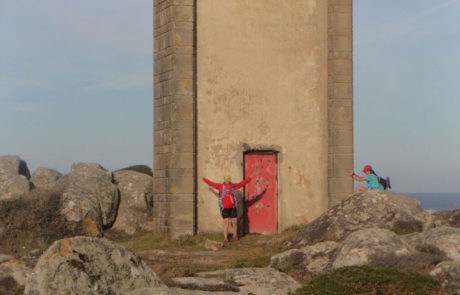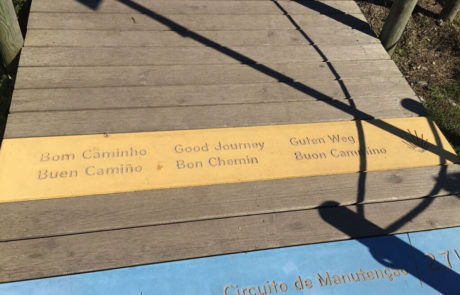Portugués Coastal Route
Along the coast of Portugal
As the name suggests, the Caminho Portugués goes to Santiago de Compostela from Portugal.
This route has over the years become quite popular and is seeing an increase in pilgrims annually, the Caminho Portugués Coastal Route starting in Porto passing through Caldas de Reis, is 251km from Santiago de Compostela.
Your starting city is Porto, home to the Port Wine, this city is full of rich history and true tradition. Visit the Porto Cathedral, it’s a Roman Catholic church located in the historical centre of the city of Porto. It is one of the city’s oldest monuments and one of the most important local Romanesque monuments. Here you will be able to get your first stamp in your pilgrim’s passport.
The route leads to Cruzeiro do Padrão da Légua (a large stone cross), where you may choose to follow the “Coastal Way” turning west at the cross, or follow the “Central Way”.
The next stop Vila do Conde has always had close ties with The Camino de Santiago, primarily due to the strong tradition of pilgrimage in the region since the Middle Ages. It is also known for its ship yards dating back to the 15th century.
Following the coastal route you pass Póvoa de Varzim the biggest maritime fishing market in north and central Portugal, and then reach Esposende (Marinhas). Take note that Esposende Centro is 4.3km before Marinhas.
The following morning approximately 9km outside Esponsende Centro you will find a quaint coffee shop with a small supermarket called Gabriela, make sure you stop for a well-deserved coffee and cheese roll.
In the region of Viana do Castelo the route of ancient roman roads has remained unaltered. At this point you will have the choice of walking on the beach or on the ancient merchants’ paths.
We invite the pilgrim to enter the Caminha region through the village of Âncora making their way through the forest paths and over Ponte da Torre, an ancient bridge dating from the end of the 17th century made of stone slabs.
Do not miss the historic centre of Vila Nova de Cerveira , the city known for its artistic flair, visit the castle and just sit in awe of the town’s beauty. Look up into the mountain and see the “Cerveira” looking down onto the town.
As you walk along the Minho river to Valença, where the Portuguese Coastal way meets up with the Central way, enter the fort via the crowned doorway and you are in the biggest fortification with bastions in Europe with more than 5km of wall dating back to 1770.
Tui will be the first Spanish town you will encounter after crossing the bridge over the river Minho, the river serves as a natural border between both countries.
Tui was a very important town in medieval times and you can still see many buildings dating back to the 15-16th centuries, including its cathedral.
Porriño is at the centre of an important industrial area. It is one of the world’s biggest granite producers. You will pass this town on your way to Redondela.
Arcade is a small coastal town famous for its oysters. Every year, at the beginning of April, Arcade celebrates an oyster festival.
Pontevedra has one of the most important historical centres in Galicia, after Santiago de Compostela. Most of the city centre has been pedestrianised and Pontevedra has become an internationally acclaimed city.
Don’t forget to rest your feet at Caldas de Reis which is well-known for its thermal waters.
In Padrón – you will find the Church of Saint James of Padrón, where you will see a roman stone altar, a very important element in the Jacobean tradition. This is believed to be the place where the boat which carried the body of the Apostle was moored. It is also the home of the famous Padrón peppers.
The final stage to Santiago de Compostela takes you through the city. You will be approaching from Santa Susana park by Capilla Pilar and then make your way up the Porta Faxeira (traffic lights have replaced the historic south gate into the city).













